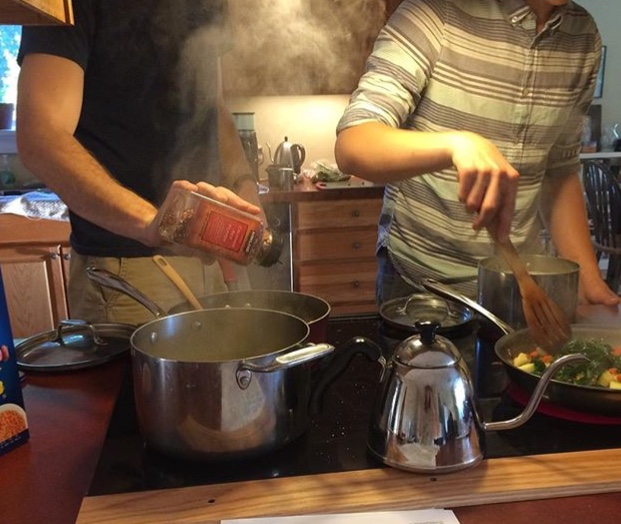What flavor is Dr. Pepper? Is it vanilla? Is it spicy? Spicy how? Jalapenos are spicy but in a different way.
Don your chef’s hats and activate your Ratatouille synesthesia because we’re here to talk about flavors. Helen asked me to write a response blog to Cooking without a Crutch, in which I reveal my cooking secrets. If that’s what you’re looking for, you came to the wrong place. That course comes in an 8 VHS tape pack and can be purchased for 150 payments of $2.50.
As I don’t want to start an internet war, let me specify that I don’t think that cooking with meat and cheese is a crutch. They are imbued with flavors that can add spectacular depth to a dish.
However, those flavors are not necessarily exclusive to meat and cheese. You can still achieve them and maintain a vegan diet by developing two essential skills.
Practice describing your food to an alien.
What does it taste like? Why? Why do I even like this? Why am I licking the plate?
Let’s breakdown meat and cheese, respectively, using this tactic.
Case study #1: Bacon
“But what about bacon?!” Ah yes, the question all omnivores ask vegans.
I love southern cooking, and a lot of southern cooking involves the use of bacon or pork in greens and baked beans. But if we break down what bacon tastes like we can build the fundamentals back up again without it.
Bacon really consists of a few elements:
- Fat
- Salt
- Smoke
- Sweetness
- Savoriness
So what can replace these components? Fat is easy to replace; olive or coconut oils are usually my go- to’s. Salt is straight forward. Smoke is easy too. Liquid smoke is always a great fall back, but I love adding some smoked paprika or smoked chilis (I really like spicy food). With sweetness, I add a little brown sugar because most bacon producers do the same. Now savory-ness or umami always sounds tricky, but can be achieved more easily than you think. Soy sauce, miso paste, cumin, vegetable stock, and (my personal favorite) Doenjang all add both that savory backbone that you need in a dish.
Case Study #2: Cheese
I’ll be honest: the texture of real cheese is hard to replace, but the taste doesn’t necessarily have to be. The flavor of cheese is nothing more than creamy, fatty, and funky.
Wait…funky?
Yes, funky. There’s a reason that most cheese cellars can be described as “God’s foot”. That extra special taste comes from the transition from milk to cheese that the bacteria and mold give to it. And so the eternal vegan question remains: What can bring in The Funk? Barry Gibb?
Personally I use a lot of nutritional yeast. It’s weird in all the right ways. I am not talented enough to come up with fake cheese recipes on my own, but I feel like the ones that are out there are always missing something.
That’s why knowing what to substitute is only one piece of the puzzle. No dish comes out perfect the first time.That’s why it’s important to remember the second essential cooking skill:
Don’t give up.
Oddly enough the only true way to succeed in cooking is failing and learning from that failure. I’ve been lucky enough in my life to come from an Italian family that cooks a lot, and spent way too much time working in kitchens in college. The best thing that’s helped me learn to cook is someone telling me that I did something wrong. So when I’m in the kitchen now, I look fluid and knowledgeable, but it’s memory telling me to go one way or another.
Need help getting started?
See if your favorite restaurants have a cookbook. For me, that’s Plum’s cookbook. If your favorite place doesn’t have one, ask them what their favorite cookbook is. Chefs are just fans of other chefs, and replicating their food is flattery. So get copyin’.
